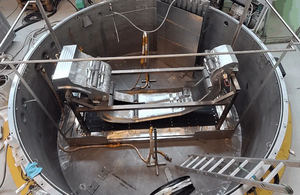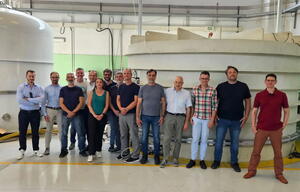First set of cassette bodies completes testing
Because of the blistering heat flux faced by the plasma-facing targets of the ITER divertor—equivalent to ten times the heat load of a spacecraft re-entering Earth's atmosphere—they tend to eclipse the more prosaic divertor cassette body. But this structural element is critical—hosting the targets, locking down onto the vacuum vessel, sheltering cooling channels, and providing neutron shielding for the steel vacuum vessel and the magnetic coils. Years of R&D in Europe are coming to fruition as a first set of cassette bodies has completed testing.
The strangeness of their shape, the challenges of fabrication, the stringent tolerances ... the ITER divertor cassettes are one-of-a-kind components that have been the object of at least 15 years of R&D in Europe. The European Domestic Agency, Fusion for Energy, carried out a competitive prototyping campaign before selecting three suppliers to manufacture the 54 divertor cassettes needed for the ITER tokamak plus 4 spares.
Four units manufactured by the SIMIC–CNIM consortium have undergone testing this year, first completing hydraulic pressure tests in April, and more recently undergoing hot helium leak tests to ensure that the components are leak-tight and ready for final dimensional checks).
“The successful completion of the tests is a big milestone that confirms the robustness of our manufacturing processes and the dedication of our teams to meet the most demanding standards. It is the fruit of the excellent collaboration with Fusion for Energy, built on mutual trust and a shared commitment to excellence,” states Ermano Franchello, SIMIC-CNIM Project Manager.
The first deliveries to ITER are expected in early 2026.
See the full report on the Fusion for Energy website.



